1. Health Monitoring
Artificial intelligence is revolutionizing health monitoring in wearables by enabling continuous, real-time analysis of vital signs and health metrics. Smartwatches and fitness bands now use AI algorithms to track heart rate, blood pressure, oxygen saturation, and more, alerting users to irregularities that might indicate health issues. This proactive monitoring means potential problems (like arrhythmias or hypertension) can be detected earlier than with periodic doctor visits. AI’s pattern-recognition ability helps distinguish meaningful health signals from noise, reducing false alarms. Overall, AI-driven wearables empower individuals to keep closer tabs on their health and prompt timely medical attention when anomalies arise, shifting healthcare toward prevention and early intervention.

AI-enhanced wearable devices can detect subtle physiological changes with high accuracy, outperforming traditional monitoring. For example, a recent study showed that a machine-learning model for wearable ECGs achieved a 98.6% sensitivity in identifying critical heart arrhythmias – significantly higher than human technicians (around 80% sensitivity) – greatly improving early detection of cardiac issues. In another application, AI algorithms in continuous glucose monitor (CGM) wearables are able to predict dangerous blood-sugar drops hours in advance, allowing diabetics to intervene before a crisis occurs. By continuously analyzing streams of sensor data, AI in health-monitoring wearables provides timely insights and alerts, which can literally be life-saving for users with underlying conditions.
2. Fitness Coaching
AI is turning wearable devices into personal fitness coaches that adapt to each user’s needs. Modern smartwatches and fitness trackers analyze exercise data (steps, heart rate, calories, etc.) with machine learning to provide customized workout plans and real-time feedback. The AI can adjust the intensity and type of exercises based on user performance and progress, helping to prevent injury and optimize results. Over time, these wearables “learn” individual behaviors and can offer motivational prompts or recovery advice tailored to the user’s habits. This level of personalization means that whether someone is a beginner or an athlete, their wearable can act like a knowledgeable trainer in their corner, guiding them to achieve fitness goals more effectively than one-size-fits-all programs.
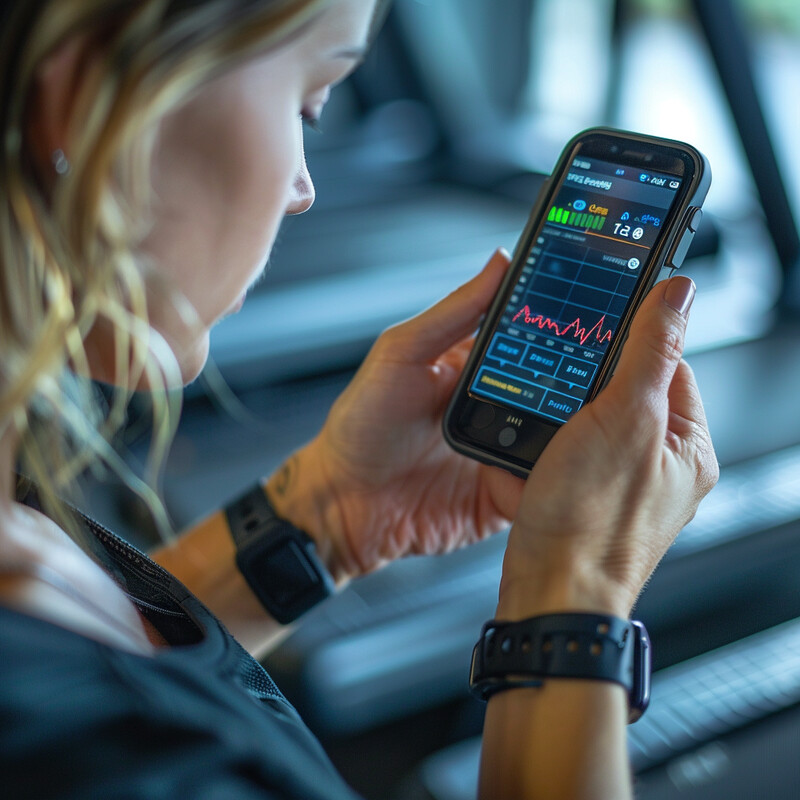
Research shows that AI-driven coaching on wearables can meaningfully improve fitness outcomes, especially when combined with human insight. In one large study, participants who used an AI-powered weight loss app on their wearable (which provided diet and exercise recommendations) lost around 5 pounds in 3 months – about 74% more weight loss compared to those guided by AI alone without any human coach involvement. The AI in these apps analyzed users’ activity levels and dietary logs to suggest goals and adjustments, demonstrating effectiveness even as a standalone coach. Furthermore, companies like Fitbit and Garmin have integrated AI to deliver on-the-fly exercise feedback (such as form corrections or pacing cues) based on sensor data. By analyzing motion and biometrics, AI-enabled wearables not only track performance but also give adaptive coaching, which has been shown to increase users’ adherence to exercise routines and improve overall fitness markers.
3. Emotion Recognition
Wearable devices are increasingly using AI to gauge emotional and mental states by interpreting physiological signals. Sensors on smartwatches – measuring heart rate variability, skin conductance, temperature, and even subtle changes in voice or facial tension (for devices with microphones/cameras) – feed data into AI models trained to detect stress or mood changes. The wearable can then alert the user to these changes, helping them become aware of rising stress or anxiety levels. This technology holds promise for mental health management: an AI-equipped wearable might suggest a breathing exercise when it senses the user’s stress is high, for example. By providing private, real-time emotional feedback, AI in wearables acts as a personal mental wellness assistant, potentially improving users’ emotional regulation and well-being.
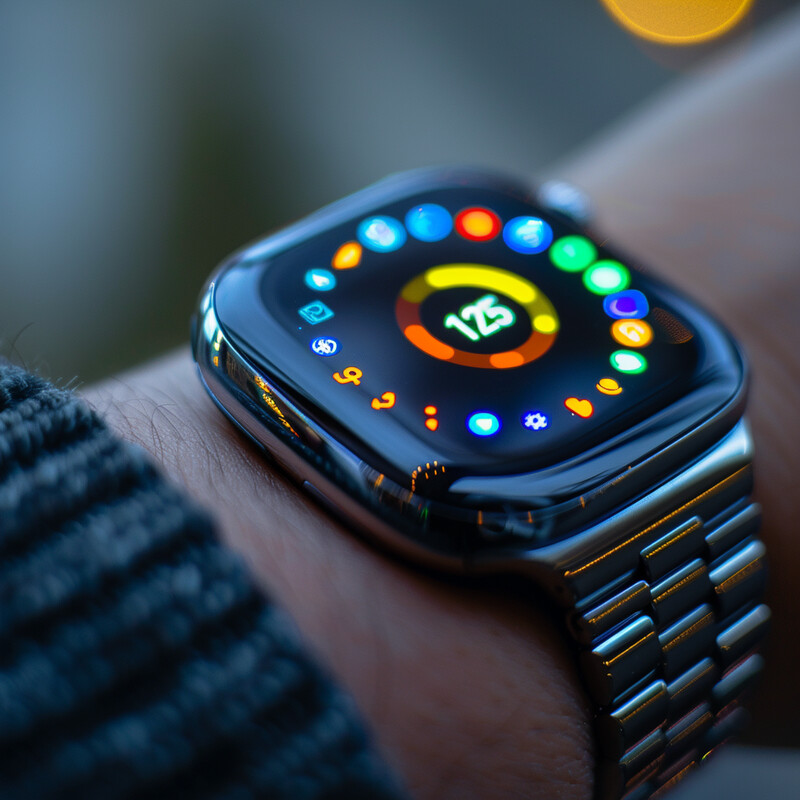
AI’s pattern recognition capabilities make emotion recognition via wearables surprisingly accurate. A 2023 systematic review of wearable stress-detection systems found that machine-learning models could detect stress and anxiety with an average 82% accuracy using biosignals from devices like smartwatches. These models analyze indicators such as elevated heart rate variability and skin perspiration to infer stress levels. In practical terms, this means a smartwatch can sense when a user is anxious and, for instance, display a calming prompt or alert the user to take a break. Early real-world trials have shown encouraging outcomes: in one 100-day study with an AI-driven stress monitoring app on smartwatches, participants reported increased awareness of their stress triggers and saw reductions in daily stress levels over time. Such findings underscore how AI-equipped wearables can automatically “read” emotional cues and help users manage their mental health more proactively.
4. Personal Safety Features
AI is bolstering personal safety in wearable tech by enabling devices to automatically detect emergencies and summon help. One of the hallmark features is fall detection: smartwatches use accelerometers and AI algorithms to recognize the distinct motion pattern of a hard fall. If a fall is detected and the user doesn’t respond, the wearable can call emergency services and share the user’s location. Similarly, AI in wearables powers features like crash detection (identifying car accidents via sudden deceleration patterns) and panic alerts (triggered by specific gestures or voice cues). These capabilities give users – especially seniors or those who live alone – an added layer of security. In risky situations (e.g. an accident or if the user is incapacitated), the wearable acts as an AI guardian, automatically connecting to assistance without needing the user to manually call for help.

Millions of people now rely on AI-driven safety features in wearables, and there are numerous documented cases of lives saved by these technologies. For instance, Apple’s smartwatch, which uses machine learning to detect falls and severe impacts, has been credited with promptly alerting 911 in emergency situations such as hard falls, fainting spells, and even car crashes. In late 2023, news outlets highlighted several real-life rescues: a hiker who fell off a trail was located after his watch’s fall detector automatically called emergency services, and an elderly man received immediate medical aid because his watch sensed a fall and notified paramedics when he couldn’t respond. Beyond falls, wearables use AI-based GPS tracking to enhance personal safety – for example, if a runner’s smartwatch detects an unusual stop combined with no movement, it can send an alert with GPS coordinates to emergency contacts. These advancements illustrate how AI-enabled wearables act as always-on safety nets, significantly reducing response times during personal emergencies and likely saving lives in the process.
5. Enhanced User Interfaces
AI is making wearable interfaces more intuitive and natural to use, moving beyond tiny touchscreens to voice and gesture controls. With speech recognition powered by AI, users can now talk to their smartwatches or earbuds to send messages, set reminders, or ask questions, hands-free. This voice interface has improved dramatically as on-device AI chips process language faster and more accurately than ever before. Additionally, AI enables gesture-based controls: for example, advanced smartwatches can detect specific hand or finger movements (like a double-tap of fingers or a wave of the hand) as commands. By learning from sensor data (motion sensors, muscle activity, etc.), the AI interprets these gestures to control apps or navigate menus. These innovations result in a more seamless interaction – instead of fiddling with buttons, users can simply speak or move in a certain way to command their wearable. The overall effect is that wearables feel more like an extension of the user, responding intelligently to natural actions and reducing the friction of traditional interfaces.

Cutting-edge wearables are already showcasing AI-driven interface enhancements. For instance, the Apple Watch Series 9 introduced a new “double tap” gesture that lets users control the watch by tapping their thumb and index finger together – an ability enabled by a machine learning algorithm running on the watch’s Neural Engine. The AI algorithm analyzes data from the watch’s accelerometer, gyroscope, and even blood flow sensors to recognize this subtle gesture, allowing users to answer calls, snooze alarms, or scroll widgets with a simple pinch motion. Similarly, AI-powered speech recognition on wearables has advanced to the point that many smartwatches now handle voice commands on device, without needing cloud processing. This means when you ask a question or dictate a text via your watch, the AI chip transcribes and understands you in real time, even offline, making voice control faster and more reliable. Tech developers have also demoed neural wristbands that use AI to detect finger movements and air gestures, which could soon let users control AR glasses or other devices just by moving their hands. In short, AI is enabling wearables to understand our voices and motions, fundamentally improving the user interface experience.
6. Predictive Health Insights
AI is empowering wearables to not just track current health metrics but also predict future health events and risks. By analyzing historical data alongside real-time sensor readings, wearables can forecast trends – for example, noticing that a user’s resting heart rate has been rising and suggesting this could precede an illness or stress episode. These predictive insights turn wearables into early warning systems. If a smartwatch’s AI detects patterns that match the early stages of conditions (like an irregular heartbeat pattern that often comes days before a stroke, or subtle sleep and activity changes that precede a flare-up of a chronic condition), it can alert the user to seek preventive care. This shifts the role of wearable health tech from passive recorder to active guardian, potentially catching issues before they become serious. For individuals with chronic diseases, such proactive alerts can be invaluable, and even generally healthy users benefit from AI predictions that encourage lifestyle adjustments (like warning signs of overtraining or impending burnout).
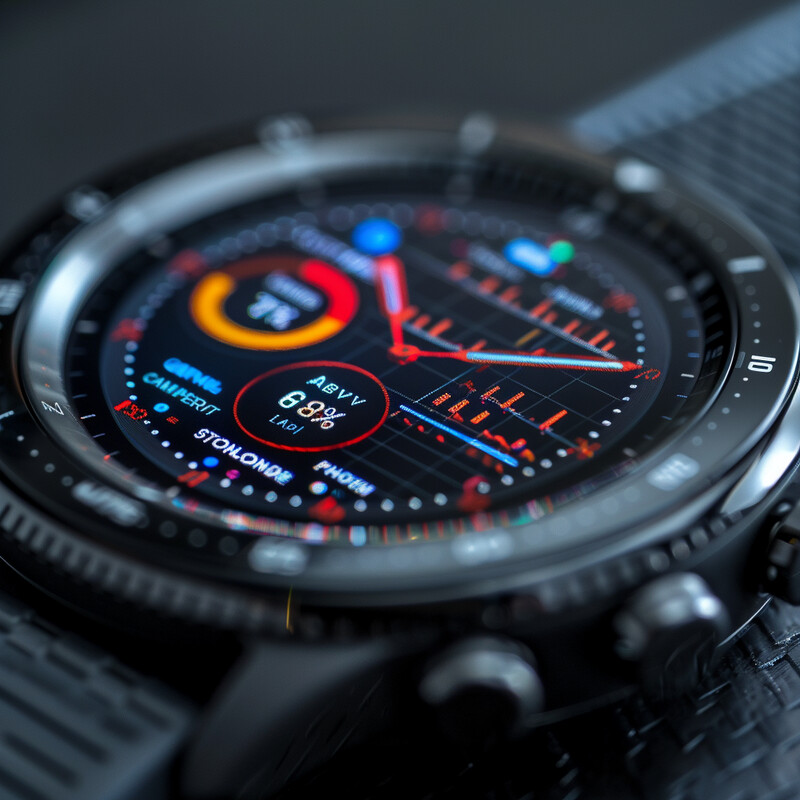
Real-world examples show the powerful potential of AI-driven predictions in wearables. Researchers have demonstrated that AI algorithms can use wearable data to anticipate medical crises hours or even days in advance. One striking 2024 study deployed a low-cost wearable with AI in a dengue fever outbreak: the system was able to predict dangerous deterioration in patients’ conditions hours ahead of time, giving doctors a critical head start in treatment. Similarly, AI-enhanced cardiac wearables can not only detect current arrhythmias but also predict the likelihood of a serious heart event – in one case, improving early detection rates of atrial fibrillation and other cardiac issues, thereby prompting earlier clinical interventions. Even consumer fitness wearables are venturing into predictive territory: for instance, some smart rings and watches began using AI to predict illnesses like influenza or COVID-19 by noticing subtle changes in metrics (elevated night-time heart rate, changes in sleep patterns) before the user feels sick. By leveraging vast datasets and machine learning, these devices move beyond reactive alerts, providing foresight that can guide users to take precautionary steps (like resting, hydrating, or consulting a doctor) before a full-blown health issue occurs.
7. Sleep Quality Analysis
AI has significantly improved the accuracy and depth of sleep tracking in wearable devices. Traditional fitness trackers could only give a rough estimate of sleep duration, but now machine learning algorithms analyze heart rate patterns, movement (actigraphy), and even blood oxygen levels to differentiate between sleep stages (light, deep, REM). Wearables use AI to provide a detailed sleep profile each night, including how long the user spent in each stage and how restorative the sleep likely was. Beyond just tracking, AI can identify factors affecting sleep quality – for example, recognizing that a user’s heart rate was elevated in the night, suggesting poor sleep due to stress or alcohol. Many devices also offer personalized tips generated by AI (like recommending an earlier bedtime or a mindfulness session) based on the user’s sleep data trends. In essence, AI-powered wearables turn subjective aspects of sleep into quantifiable data and actionable insights, helping users make informed changes to improve their rest and overall health.
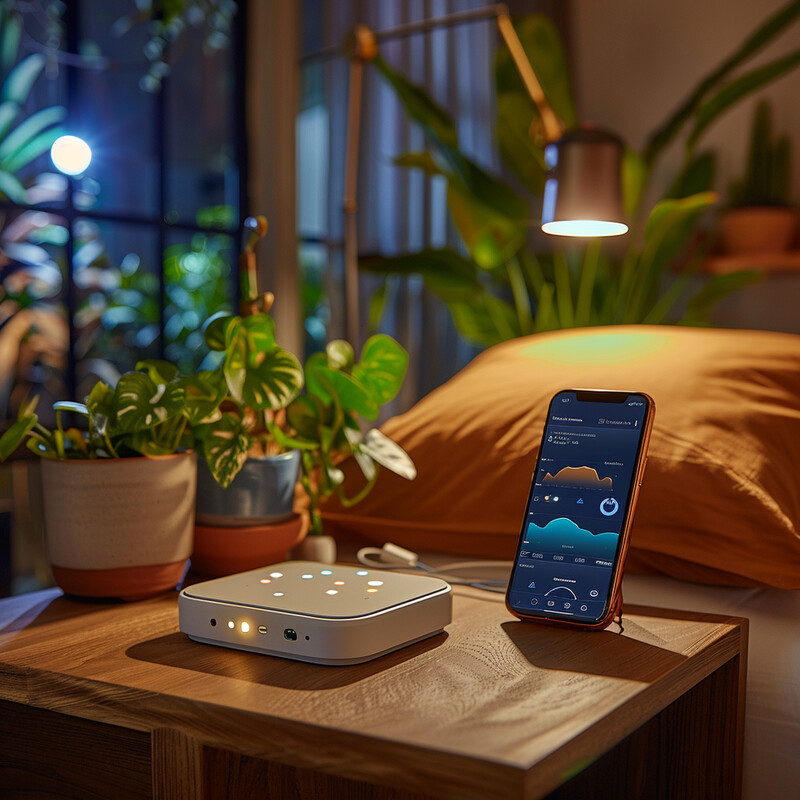
Wearable sleep monitors now approach clinical levels of accuracy thanks to AI algorithms. A validation study by researchers at Harvard in 2024 compared popular AI-enhanced wearables (including Apple Watch, Fitbit, and Oura Ring) against laboratory polysomnography and found over 90% agreement in distinguishing sleep vs. wake states. In terms of sleep staging, the best-performing device (a smart ring with advanced AI) correctly identified specific sleep stages about 76–80% of the time, which is a substantial improvement from earlier generations that struggled to do better than ~60% agreement with lab results. These advances are largely due to machine learning models that learn from large datasets of sleep measurements, enabling wearables to detect the signature patterns of REM sleep or deep sleep from heart rate and movement data. Furthermore, AI allows wearables to spot anomalies – for example, flagging possible sleep apnea events when abnormal drops in blood oxygen are detected during sleep, or recognizing if poor sleep correlates with late caffeine intake noted on the user’s schedule. By providing such granular and reliable analysis, AI-driven sleep wearables have become valuable tools for users and even sleep clinicians to monitor and improve nightly rest.
8. Dietary Management
AI is helping wearable users manage their diet and nutrition by closely integrating food tracking with physiological monitoring. Some smartwatches and health apps now use AI to log meals via voice or photo recognition – for instance, you can snap a picture of your plate, and an AI will estimate the calorie and nutrient content. Wearables also combine diet data with biosensor readings (like blood glucose or activity level) to give personalized dietary advice. This might include suggesting healthier food alternatives, optimal meal timings, or portion adjustments based on one’s daily activity and metabolic responses. For people with specific goals (weight loss, muscle gain, managing diabetes), the AI can adapt recommendations in real time – if it notices your blood sugar spiking after certain meals, it will advise adjustments to those foods. By continuously learning from an individual’s inputs and body responses, AI-powered dietary management tools provide guidance that goes far beyond generic calorie counting, making nutrition plans more effective and easier to follow through digital coaching and timely feedback.
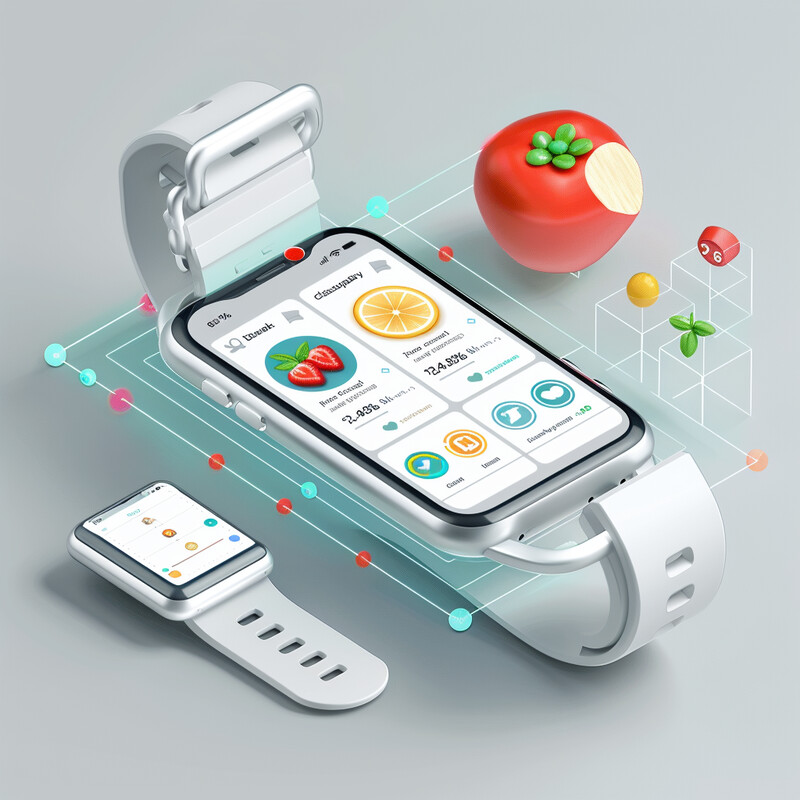
AI-driven dietary coaching via wearables has shown measurable benefits in clinical studies. A notable example is a 2025 study of an AI-powered nutrition app paired with a continuous glucose monitor, involving 944 users including individuals with prediabetes and type 2 diabetes. Over just two weeks, users who received AI-personalized meal recommendations and feedback improved their “time in range” (the percentage of time their blood glucose was in a healthy range) from ~75% to 85% on average for healthy participants, and from 50% to 57% for diabetic participants – a significant improvement in blood sugar control. Additionally, these users saw an average weight loss of about 3.3 pounds in one month without a separate structured diet program, indicating the AI’s nutritional guidance was effective in promoting healthier eating habits. The AI in this app learned from each user’s food intake and glucose responses to predict how future meals would affect them, then provided tailored suggestions (such as recommending higher-fiber breakfast options to flatten glucose spikes). This personalized approach, delivered through a wearable-linked app, demonstrates how AI can act as a nutritionist for the user – monitoring diet and health metrics in tandem, and giving real-time advice that leads to tangible health improvements.
9. Seamless Connectivity with Other Devices
AI enables wearables to fit smoothly into the broader ecosystem of our devices, creating a seamless user experience across smartphones, computers, and smart home gadgets. Modern wearables are constantly connected – a smartwatch can instantly relay a notification from your phone or act as a remote control for your smart TV. What makes this increasingly seamless is AI’s role in managing connections and data intelligently. For example, AI can learn which notifications you typically want to see on your watch versus your phone, and route them accordingly. In an IoT-enabled home, your fitness band might communicate with your smart thermostat (perhaps turning down the heat when it senses you’ve fallen asleep), orchestrated by AI routines. Wearables also often serve as an authentication device – using AI, they can automatically unlock your laptop or car when you approach, recognizing you are the user. In essence, AI helps wearables “talk” to other devices at the right times and context, so that all your personal tech works in unison without you having to manually set up each interaction. This creates a more unified and convenient digital experience as you move through your day.
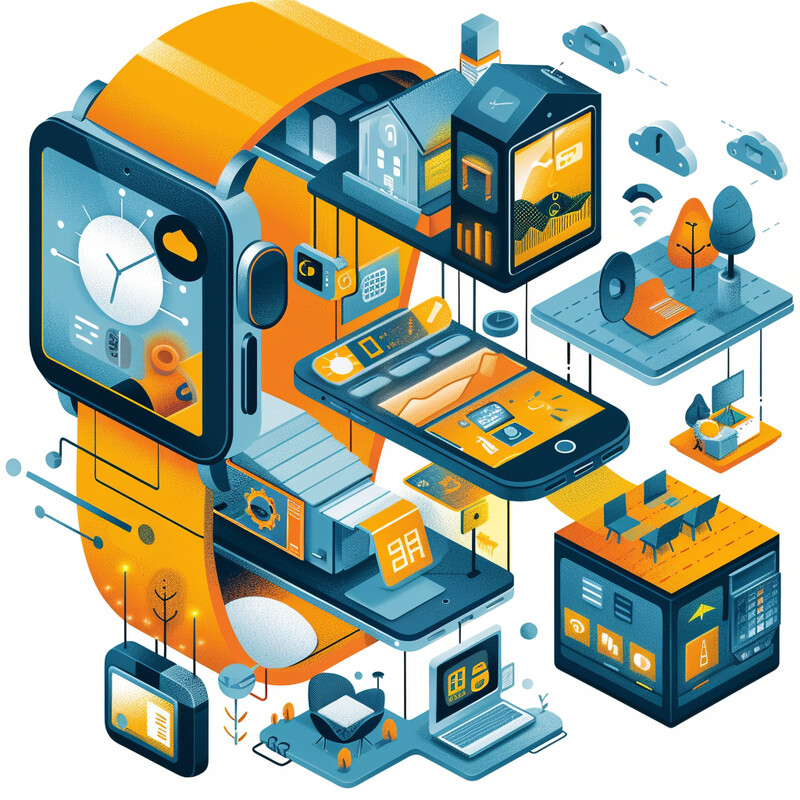
Seamless connectivity is underpinned by AI-driven decision-making within the wearable and the connected network. Industry analyses note that IoT connectivity is a critical factor enabling real-time data exchange between wearables and other devices or cloud platforms, which in turn enhances the capabilities of AI features. For instance, when you wear a smartwatch, AI algorithms manage the Bluetooth/Wi-Fi connections to ensure that your fitness data syncs immediately to your phone app and your online health dashboard. If you step into your car, the smartwatch might automatically switch its audio output to the car’s system – an AI-mediated convenience. According to IDC, global shipments of wearables reached 538 million units in 2024, and the vast majority of these devices integrate with mobile apps or home systems. Given this scale, tech companies are leveraging AI to handle the complexity of these interactions: Google’s ecosystem uses AI to allow Android watches, Pixel phones, and Nest home devices to share context (so, a Google watch might, for example, send a prompt to your smart speaker to remind you of a calendar event when you’re at home). The result of these AI-managed connections is that users experience their multiple devices as one coherent system rather than isolated gadgets.
10. Context-Aware Notifications
AI is making notifications smarter and less intrusive by adding context awareness to how and when alerts are delivered on wearables. Instead of a barrage of pings, an AI-enabled system can determine if you’re in a meeting, driving, or sleeping, and filter notifications accordingly. For example, if your smartwatch knows (via your calendar and motion sensors) that you’re in the middle of a workout, it might hold off non-urgent work emails and instead maybe prompt a hydration reminder. Conversely, if you’re idle at home in the evening, it might surface that news alert or social media update it held back earlier. Context-aware notification systems use inputs like location, activity level, time of day, and even ambient noise to gauge the user’s situation. They then prioritize or mute alerts to ensure you get important information at the right time, without undue distraction. In short, AI allows wearables to be courteous digital assistants – delivering the information you need when it’s useful, and staying quiet when you’re busy with something else.

Context-aware notifications in wearables rely on AI algorithms to interpret various sensor data and user habits. This approach has been shown to improve user experience by reducing unnecessary interruptions. According to technology analysts, AI-driven features such as context-sensitive notification filtering make the user experience more intuitive and personalized. For instance, many smartwatches now have an “auto Do Not Disturb” mode where the device’s AI silences alerts if it detects the user’s moving at high speed (assuming they’re driving) or during usual sleep hours, only allowing high-priority calls through. In the fitness realm, an academic project called AwarNS demonstrated that delivering fitness reminders only when a user is in a suitable context (e.g., alert to stand up after 1 hour of inactivity, but not if the user is currently walking) led to higher compliance with exercise prompts. Major platforms are adopting these ideas: Google’s Wear OS uses AI to show “smart notifications” that adapt based on whether you’re active or stationary, and Apple’s WatchOS can learn your routine (work hours, sleep schedule) to moderate notifications. By analyzing context, AI ensures that wearable notifications are timely and relevant – for example, reminding you to hydrate when your heart rate is elevated, or deferring a non-urgent app alert when you’re in the middle of a phone call – ultimately making notifications more helpful and less annoying.